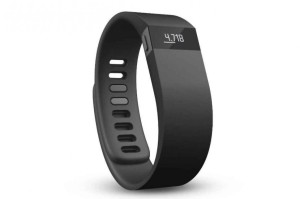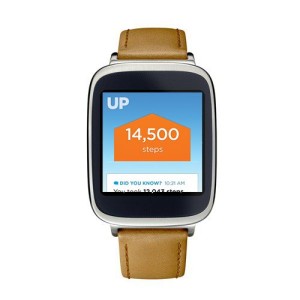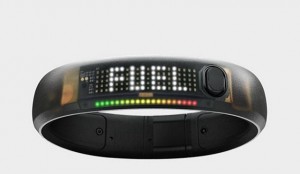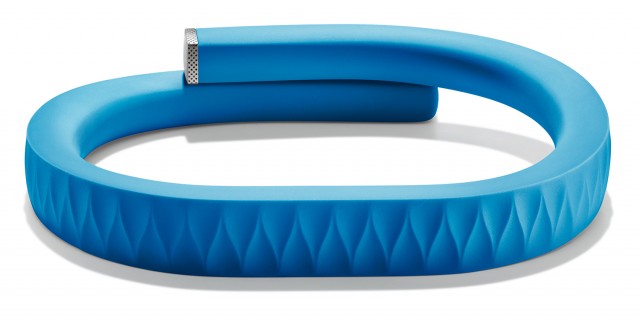In the business world, Apple entering your product category is a little bit like a tsunami crashing into a home aquarium. What had previously seemed like a nice, small and self-contained ecosystem suddenly runs the risk of being obliterated by a giant wave-maker.
When Tim Cook announced the Apple Watch at Apple’s recent media event, the crowd went wild. But exciting as it was for consumers, it represents a seismic shift for the currently $330 million wearable tech industry.
Devices that can serve up smartphone notifications, track fitness goals and even advise us on health matters have the potential to be huge — but they’re not yet. That’s about to change, according to Juniper Research, which forecasts that wearable devices like smartwatches could hit sales of $19 billion by 2018.
What happens to Apple’s marketplace rivals as this sea change takes place? Cult of Mac did some digging to find out how companies like Jawbone and Fitbit plan to survive Apple’s smartwatch revolution.

“Our mission remains to empower and inspire people to lead healthier, more active lives,” a representative for Fitbit, which currently sells the majority of fitness-tracking devices, told us. “To that end we welcome new products and services like Apple Watch to the market that help further that mission. We think that the more people learn about the benefits of tracking health and fitness, the more Fitbit’s offerings will resonate with consumers.”
But is this just the kind of scared marketing spiel you’d expect to hear? After all, no MP3 player manufacturers were outwardly waving white flags the moment the iPod arrived. Plenty of companies publicly laughed at the first iPhone while quietly scrapping their existing strategies in order to follow in Apple’s footsteps.
All about the apps
This time, nobody in the industry is mocking Apple — which is why some of the biggest players are considering ditching their hardware altogether to make apps for the Apple Watch. That’s what happened with Nike, which perhaps not coincidentally counts Tim Cook as a member of its board of directors. Earlier this year, Nike shuttered its FuelBand hardware division, with reports that it would focus on making software instead.
“Certainly it’s going to be harder to compete in hardware right now with a big player like Apple coming into the space.”
That’s also one possible strategy for Jawbone, whose Jawbone UP fitness band last year represented 19 percent of the wearables sector.
“Certainly it’s going to be harder to compete in hardware right now with a big player like Apple coming into the space,” says Bandar Antabi, head of special projects at Jawbone.
In the aftermath of Apple’s September 19 announcement, Jawbone has announced a new “bandless” app that can provide Jawbone functionality without the need for a physical Jawbone band.
The company’s new Jawbone UP app can use data from the iPhone 6’s M7 motion coprocessor, and integrates with iOS 8’s new Health app. Another micro app will work with the Apple Watch.
Antabi acknowledges that Apple’s arrival is going to disrupt wearables, but also points out that right from the start Jawbone knew it was only so long before someone did this. No man is an island, and the same is true of wearable companies.
“Right from the beginning we realized as a company that we can’t build everything,” Antabi says. “There are other great services, applications and productions out there. The key is finding the right way of integrating with this larger ecosystem, so that it becomes a win-win for everybody. The quicker this ecosystem can be built, the more users we’ll be able to bring in as an industry, and the more data points we’ll have to work with.”

In this way, the new UP and Apple Watch apps are the latest step in Jawbone’s evolution. “Our belief has always been that focusing on the software can drive the experience of helping users understand their data and what they can then do with it to make a positive impact,” he says. “Apple Watch doesn’t change that.”
If the Apple Watch does as well as analysts are predicting (USB analyst Steven Milunovich thinks it could match first-year sales of the iPad), it represents a huge opportunity for companies like Jawbone and Fitbit — which can succeed as app makers, taking advantage of the expanded array of sensors that will likely arrive with subsequent versions of Apple’s wearable.
In the short-term, though, these companies are focusing on ways to differentiate themselves from the Apple Watch: either by being cheaper, sturdier or longer-lasting than Apple’s offering.
“At Fitbit, we believe that one size does not fit all so we continue to offer the widest range of all-day trackers and price points to fit consumers’ varying needs and lifestyles,” says Fitbit’s rep.
Battery life is a selling point
One clear way to separate devices like Fitbit and the Jawbone UP band is to make users aware of their superior battery life.
Although Apple hasn’t yet confirmed the battery life of the Apple Watch, anecdotal evidence suggests it will last a day — a far cry from some of its rivals.
“Fitbit trackers are optimized for long battery life and last from seven to 10 days to six months, depending on the tracker,” Fitbit’s rep told Cult of Mac.
Jawbone, meanwhile, recently issued an over-the-air firmware update that boosts battery life: The UP24 band now lasts 14 days, rather than seven, on a single charge.
“If your smartwatch battery lasts for one day, it’s probably not going to be something you wear to sleep,” says Jawbone’s Antabi. “If you’re trying to build a 24-7 contextualized dataset around you, you need an ecosystem of software that you can be plugged into on a near-permanent basis.”

Beyond this, Antabi says Jawbone has other exciting products in the pipeline, although he was not able to discuss them at present. For clues, he says to look at BodyMedia, the Pittsburgh, Pennsylvania-based maker of wearable health-tracking devices, which Jawbone acquired earlier this year in a deal worth “north of $100 million.”
“What you’re going to see from us is not just single-sensor products, but multisensor ones,” he says. “That could be heart rate, body temperature, a number of different areas. I’m not in a position to go into too much detail right now, but it’s very exciting.”
At least in its first iteration, the Apple Watch will only track heart rate, although other sensors will likely be added for later versions.
Where Jawbone and other rivals will end up remains to be seen. They could wind up as purposely niche products, perhaps focused on areas like mobile health for usage in hospitals.
At the same time, it’s very possible that over the next few years we will see their rival hardware platforms fall away. Leveraging the deep knowledge they’ve acquired about users could become their chief business model — working alongside Apple as part of the iOS ecosystem.
“Apple’s a disruptor by nature, so we’re just going to have to wait and see how it affects other wearables in this space,” Antabi says. “The only thing for sure is that it’s going to continue to make an impact. But we’re ready.”
So are customers. It’s an exciting time to be interested in wearables.
Watch this space. No pun intended.


